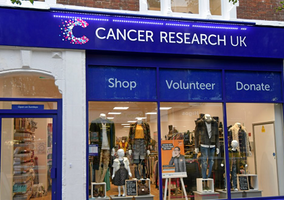Changes to employers’ national insurance contributions (NICs) are stifling charity shops’ ability to raise money for their parent charities, sector retailers have said.
Respondents to the Charity Shops Survey 2025, published in the October issue of Charity Finance, said the changes have increased their wage bills and therefore reduced their shops’ profitability.
Retailers have been affected by both an increase in the NICs rate (from 13.8% to 15%) and a reduction in the earnings threshold (from £9,100 to £5,000), which has brought more part-time shops staff into its scope.
The Charity Retail Association previously estimated that the changes, introduced on 6 April after being announced by chancellor Rachel Reeves at the October 2024 autumn budget, could cost the charity shops sector an extra £20m a year.
Charity retailers still reported being profitable last year, however, with average margins of 17-18% reported by survey respondents.
Hundreds of thousands of pounds in NICs costs
In response to the survey, the Children’s Society said the NICs changes have driven up its retail staff costs, meaning that its 101 shops’ overall contribution to the charity since April has not been as high as it would previously have been.
Dame Hannah Rogers Trust said the additional NICs costs mean that fewer funds are going back to the charitable cause. The charity said that, as a whole, it is paying an extra £180,000 this year due to the changes, “which has meant some projects have been cancelled or delayed as they cannot be funded”.
All Aboard Shops, which had 22 shops that generated £155,000 in profit overall in the financial year ending December 2024, said the NICs changes had cut its profitability further since then.
“Based on last year’s actuals, our profits have declined by approximately 75%,” it said.
“These increased costs, when combined with rising rents, escalating utility bills and other governmental tax burdens, are placing unsustainable pressure on our organisation.
“As a small-to-medium-sized charity, the cumulative effect of these financial pressures poses a serious risk to our long-term viability.”
The Salvation Army Trading Company said it had seen a direct increase in costs of around £1m due to the NICs changes across its business as a whole.
“This has made us more cautious when considering resource levels at our shops, with a greater emphasis on creating a robust business case for any proposed changes,” it said.
St Margaret’s Hospice Care said costs across the charity overall had increased by £300,000 to cover the NICs changes, of which £72,131 was attributed to its retail function.
“Coupled with an annual pay award and commitment to meet the real living wage across a large part of our workforce, this has had a significant impact on our ability to grow profits,” it said.
Workforce capacity constraints
Age UK, which had 268 shops as of 31 March, said the NICs changes accelerated the need to review its retail operating model to ensure future operational sustainability.
Others, such as Bolton Hospice, said they are now “thinking twice” before recruiting and are potentially having to recruit part-time staff rather than full-time ones.
Chest Heart & Stroke Scotland, whose profits have also been impacted by NICs changes, said: “All posts are reviewed when a member of staff leaves to check the contracted hours are correct, so we can reduce accordingly if possible to save on staff costs."
Similarly, Queen Elizabeth’s Foundation for Disabled People said the changes have meant that it “can’t always cover a shop if there’s paid sickness or holiday”.
“We only cover a few key trading days and regularly clear donations at the front of the shop,” it said.












